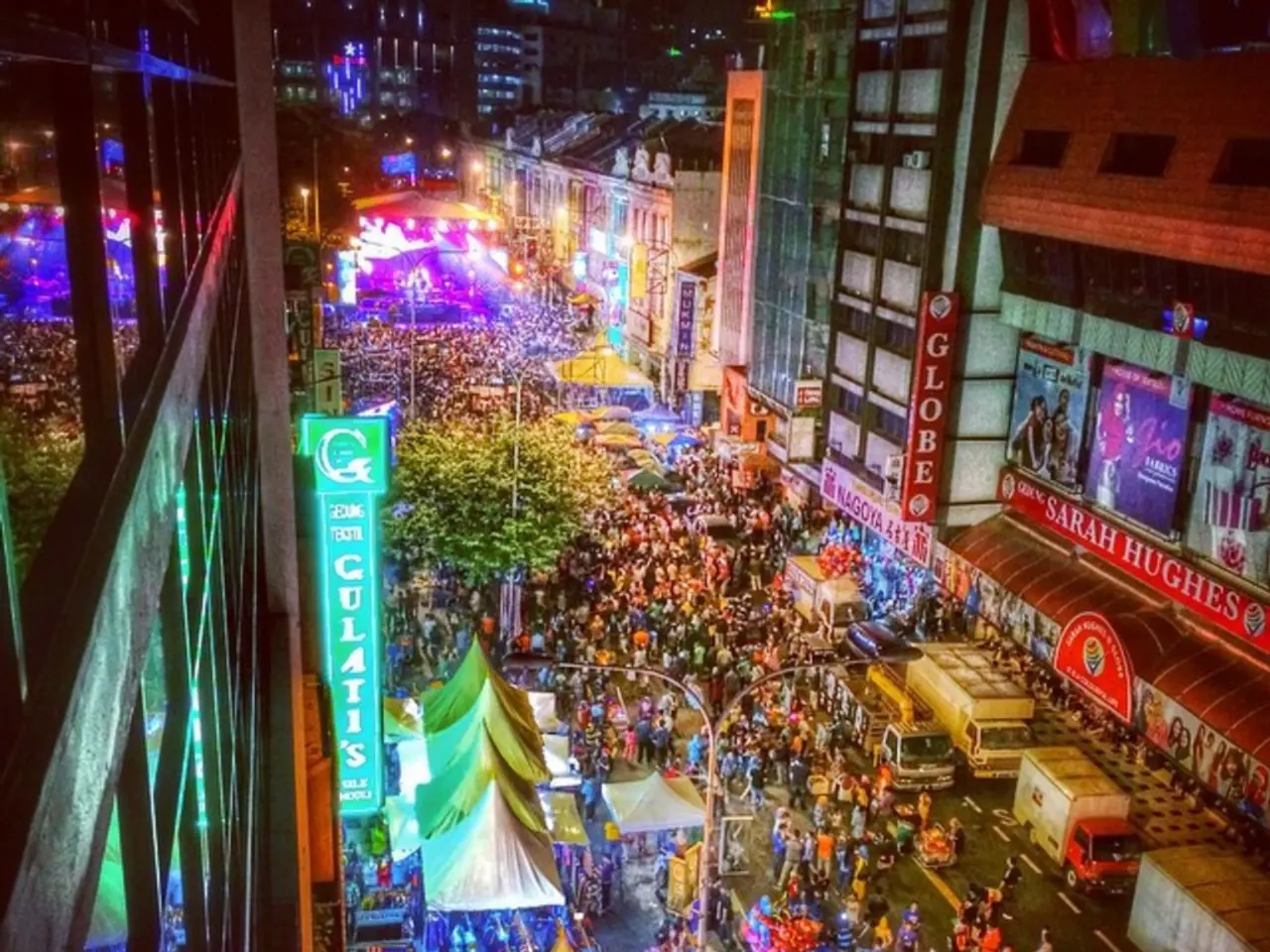Reveling in Carnival Festivities Across Tuscan Lands
Celebrating Art and Culture: A Journey Through the Carnivals of Italy and Beyond
From the sun-kissed shores of Italy to the vibrant streets of Brazil, the spirit of Carnival sweeps across the globe, bringing with it a wave of colour, creativity, and community. Let's embark on a journey through some of the most renowned Carnival celebrations, starting with the unique Carnival of Viareggio.
The Carnival of Viareggio: A Historical and Artistic Phenomenon
Nestled in the Lucca province of Italy, west of Florence, Viareggio played host to its first Carnival in February of 1873. Initiated by a group of wealthy young bourgeois, this event was a celebration of Mardi Gras, the pre-Ash Wednesday festivity[1][3]. Over time, the carnival evolved into a platform for local people to express their dissatisfaction, such as protesting tax increases through masked participation[1].
The carnival's artistic evolution can be seen in the introduction of music and movement on the floats, and by 1925, the revolutionary use of paper-mâché in float construction helped shape the carnival’s unique visual style[1]. Today, the carnival is internationally acclaimed, attracting visitors worldwide with its extravagant, large-scale floats often depicting politicians, celebrities, and famous characters[3][4].
A defining symbol of the event is its mascot, Burlamacco, created in 1930 by Umberto Bonetti, a local futurist painter and designer[1][3]. Burlamacco wears a distinctive colorful clown costume inspired by other Italian masks and local seaside colors, symbolizing laughter and jest, and connects deeply to Viareggio’s identity, with a permanent statue located on the city’s waterfront[3].
The Carnival of Venice: A Masked Affair
While the Carnival of Viareggio is a relatively modern phenomenon, the Carnival of Venice, held in the heart of Italy, dates back to the 13th century[5]. Known for its masquerade balls, classical music concerts, and street performances, the Venice Carnival offers a glimpse into the city's rich history and cultural heritage[6].
The World's Most Famous Carnival: Rio de Janeiro
Leaving Italy behind, our journey takes us to Rio de Janeiro, Brazil, home to the world's most famous Carnival. With over two million attendees each year, this vibrant celebration features steel drum bands and parades of bedazzled Samba costumes[2].
Carnival Celebrations Around the Globe
Carnival celebrations aren't limited to Italy and Brazil. From New Orleans, Louisiana, where Mardi Gras attracts over a million people, to the streets of Viareggio, Venice, and many other cities worldwide, Carnival is a universal celebration of art, culture, and community spirit[1][2][5].
Whether it's the intricate floats of Viareggio, the historic masquerade balls of Venice, or the rhythmic beats of Rio, Carnival offers a chance to immerse oneself in the vibrant cultures and artistic traditions of the world. So, if you find yourself in need of a little colour and celebration in the midst of winter, consider joining the millions who flock to these extraordinary events each year.
References:
- Carnival of Viareggio
- Rio Carnival
- Carnival of Viareggio: A Historical Overview
- The Art of Carnival Floats in Viareggio
- Carnival of Venice
- Venice Carnival Events
- The Carnival of Viareggio, featuring extravagant floats and its famous mascot Burlamacco, offers a unique blend of history, art, and community spirit.
- Moving from Italy, we explore the Carnival of Venice, a historical celebration known for its masquerade balls and classical music concerts.
- The world's most famous Carnival can be found in Rio de Janeiro, Brazil, where two million people celebrate with vibrant Samba parades and steel drum bands.




